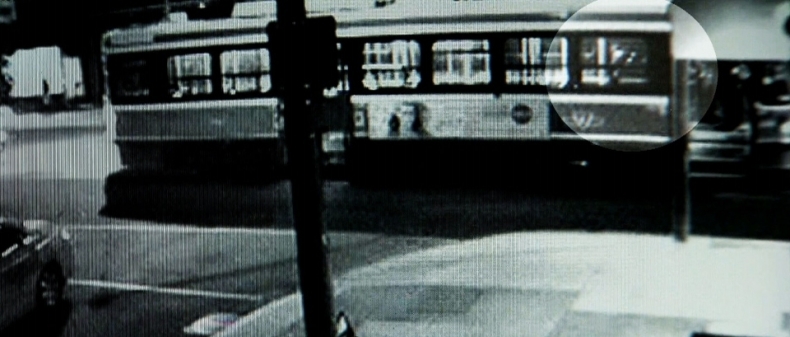
Sammy Yatim wasn’t the first to be killed by a cop, but technology has made his case different. Unsurprisingly, footage of the shooting has outraged the public, but that their demands have been taken seriously and assuaged (as much as possible) is new. Footage of the incident, which CBC reports over a million people have seen, has made it impossible for police to shrug this off. The National Post’s Christie Blatchford and Chris Selley offered two contrasting opinions about the role footage played.
Blatchford states that the second-degree murder charge may be proper, but that the SIU made its charging decision “in a hyper-charged and overly politicized atmosphere.” I understand her concern about mob justice, but police don’t kill a teenager in a political vacuum. Especially when the killing is videotaped, the mob cannot be blamed for being a mob. There’d be a lapse in public empathy and worrying apathy if there wasn’t backlash. The SIU must be expected to operate functionally in a charged political environment for the same reason police should be expected to diffuse violent situation without lethal force–it is the environment their jobs take place in.
But Blatchford’s worry is that the mob has already usurped the impartial court process. She feels the verdict is in. This is an unfounded concern. Historically courts have weighed heavily in the cops’ favour, and not just because the system is corrupt but because there’s a difference between a cop who kills someone in his private household and one who kills in the line of duty. If two investigations into Yatim’s death are already underway, this isn’t a bad thing. Far from, it’s a shame footage of police brutality is required before it is taken so seriously. But this also doesn’t mean that the reviews processes are biased in favour of the mob.
While the video footage seems like sufficiently conclusive evidence, it’s not. This morning Toronto Star confirmed Yatim was struck by 8 of the 9 bullets, but we don’t know where, and there’s a possibility that actually it was the taser, known to cause heart problems, which ultimately killed him. It seems highly unlikely, but it can’t be ruled out. In cases like this, expert analysts make surprising deductions that change the way we view what we thought we knew. Right now, we don’t know what we don’t know.
But unlike Blatchford, I also don’t think the public is a beastly, bloodthirsty mob out for Forcillo’s head, even if he has received death threats. I suspect most Torontonians are appalled, but haven’t lost their head. Protest isn’t irrational just because it’s loud. If they could be assured of a legal resolution untainted by both the police protecting their own and from mob justice, they’d be all in favour.
I’d be shocked if Forcillo isn’t convicted of second-degree murder, and if he does get off I’d be suspicious and awfully curious to hear the legal explanation. But we have to allow him his fair, unprejudiced trial. Forcillo’s “fair trial” is meaningless if it’s just a rhetorical phrase we know civilized society demands of us, and all the while we really feel that anything less than a murder conviction for Forcillo is injustice. If they find him guilty, we’ll likely know why, but if not, we’ll deal with it at that juncture.
Chris Selley, recognizing the obvious and calling it as such, states that the police would no doubt recount the events leading up to Yatim’s death very differently had they not been filmed. Selley is for a project in Calgary where police are outfitted with lapel cameras. He cautions that state agents routinely filming citizens is troubling, and points to another fundamental flaw, that an officer who would remove his name tag would presumably turn off his camera too. To remedy this, I suggest cameras that can’t be turned off, like a plane’s black box but with audio and video. But this may not even be necessary.
The essential thing about the footage of Yatim’s death was that it didn’t come from the authorities and that it was taken spontaneously. Nobody set out to videotape a cop killing, yet they did. Cell phone cameras have become so ubiquitous that outfitting police with them is unnecessary. Besides, it might be dubious to rely on a policeman’s footage when he is implicated in the incident. Knowing that they’re being recorded would hopefully stop police from committing brutalities in the first place.
Of course there’s no guarantee that the public will film the incident, but the fallout from Yatim’s death has changed the climate police operate in. That Yatim’s death was caught on tape wasn’t a fluke (it was caught on not one but two cameras). It will become the norm, just as the possibility of being videotaped will be implanted in the police’s consciousness. Ask Rob Ford if the city is crawling with cell phone paparazzi. While it feels funny or even seems perhaps recklessly unreliable to entrust safeguarding citizens against police brutality to such a lax and naturally-arising system (really, the absence of a system), it is what worked. Selley notes that since Yatim’s death, “it’s hard to miss the disappointment and fading goodwill amongst erstwhile staunch supporters [of the police]” evident in conservative newspapers. It feels like public opinion has permanently shifted, that the effects from Yatim’s death will last. It isn’t just anarchists concerned about police brutality. So while Selley calls police cameras “a potentially game-changing remedial measure,” I’d say that with or without police cameras, the game has already changed.
————
Jeff Halperin is a Toronto-based writer. You can follow him on Twitter @JDhalperin.
For more, follow us on Twitter @TorontoStandard and subscribe to our newsletter.














